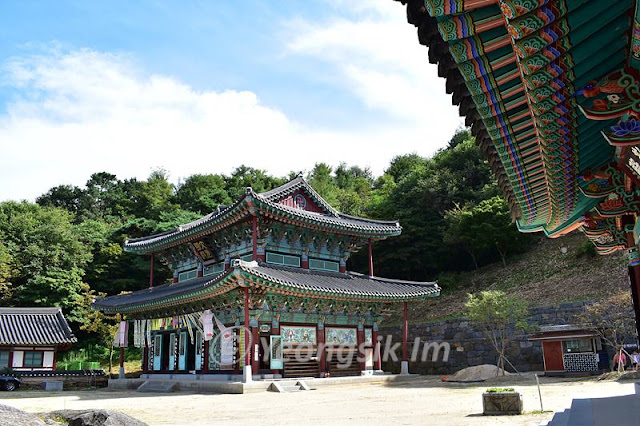Gwanchoksa Temple
Gwanchoksa Temple in Nonsan, Chungcheongnam-do is located at the foot of Banyasan Mountain (100m in elevation). This temple enshrines a Seokjomireukbosalipsang Buddha (Treasure No. 218), which was built over the course of 38 years, beginning in 967 during the Goryeo period. According to legend, while a lady was picking fernbrake on Banyasan Mountain, she heard a baby crying. When she went over, there was no baby but instead was a large rock sticking out from the ground. Upon hearing this story, the government ordered a Buddha statue to be made from the rock. This Buddha statue, widely known as ‘Eunjimireuk Buddha,’ is the largest stone Buddha in Korea (18.12m in height, 9.9m in girth, 1.8m in the length of ears, 2.43m at the height of crown). There are many other cultural heritages in this temple and every April, a splendid cherry blossom tunnel stretching from Nonsan to Gwanchoksa Temple is at its peak.
This stone lantern is placed in front of the stone image of Buddha in the precinct of the Gwanchoksa Temple. Built by Hyemyeong in 968, this temple has been rebuilt many times.
The lantern consists of a three-tiered pedestal, a light chamber, a roof stone and a finial. As a typical square stone lantern of the Goryeo Dynasty, the lotus pattern is roughly carved around the upper and lower parts of the pedestal.
The middle part of the pedestal, which is round, has seven stripes carved horizontally, three in the middle and two for the top and two for the bottom. The stripe in the center, which is thicker than the others, is beautifully decorated with the pattern of eight blossoms.
The two-storied light chamber has disproportionately big 'windows' and four pillars, which are too slim, to support the capstone. The roof stones are decorated with floral patterns at the edges, and the eaves are gently curved upward at the corners.
The flame-shaped ornament at the top looks rather heavy because of too much decoration. It looks as powerful as the stone Buddha statue standing behind it, but the general impression from the whole structure is that of unbalance and instability.
This stone lantern is believed to have been made in 968 (13th year of the reign of King Gwangjong of Goryeo), around the time the Stone Standing Maitreya Bodhisattva (Treasure No. 218) was made.
This is the second largest stone lantern after the Stone Lantern at Gakhwangjeon Hall of Hwaeomsa Temple (National Treasure No. 12).





















Comments
Post a Comment